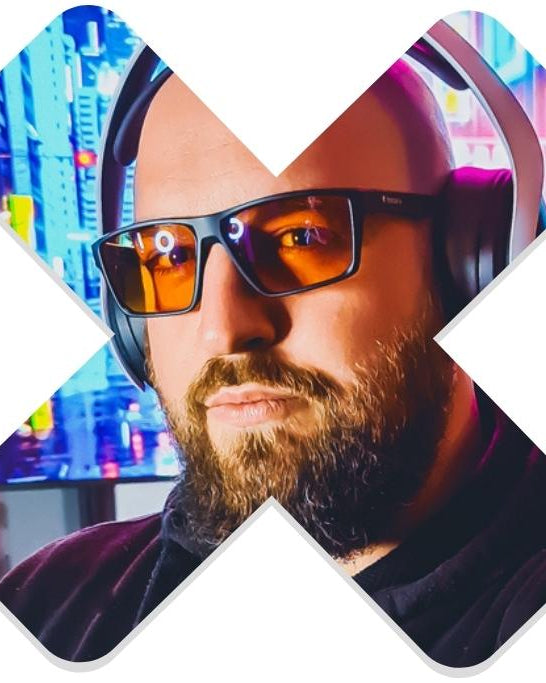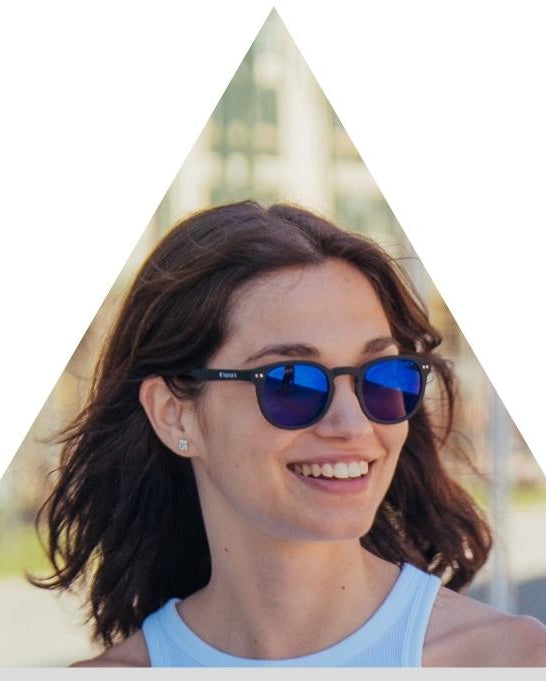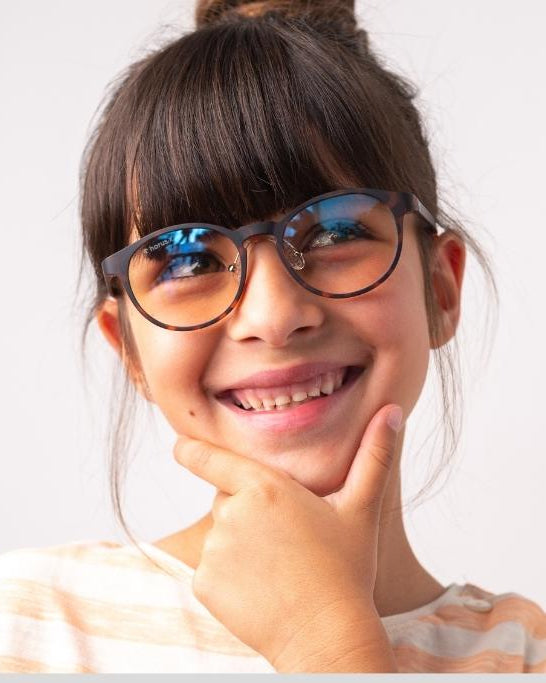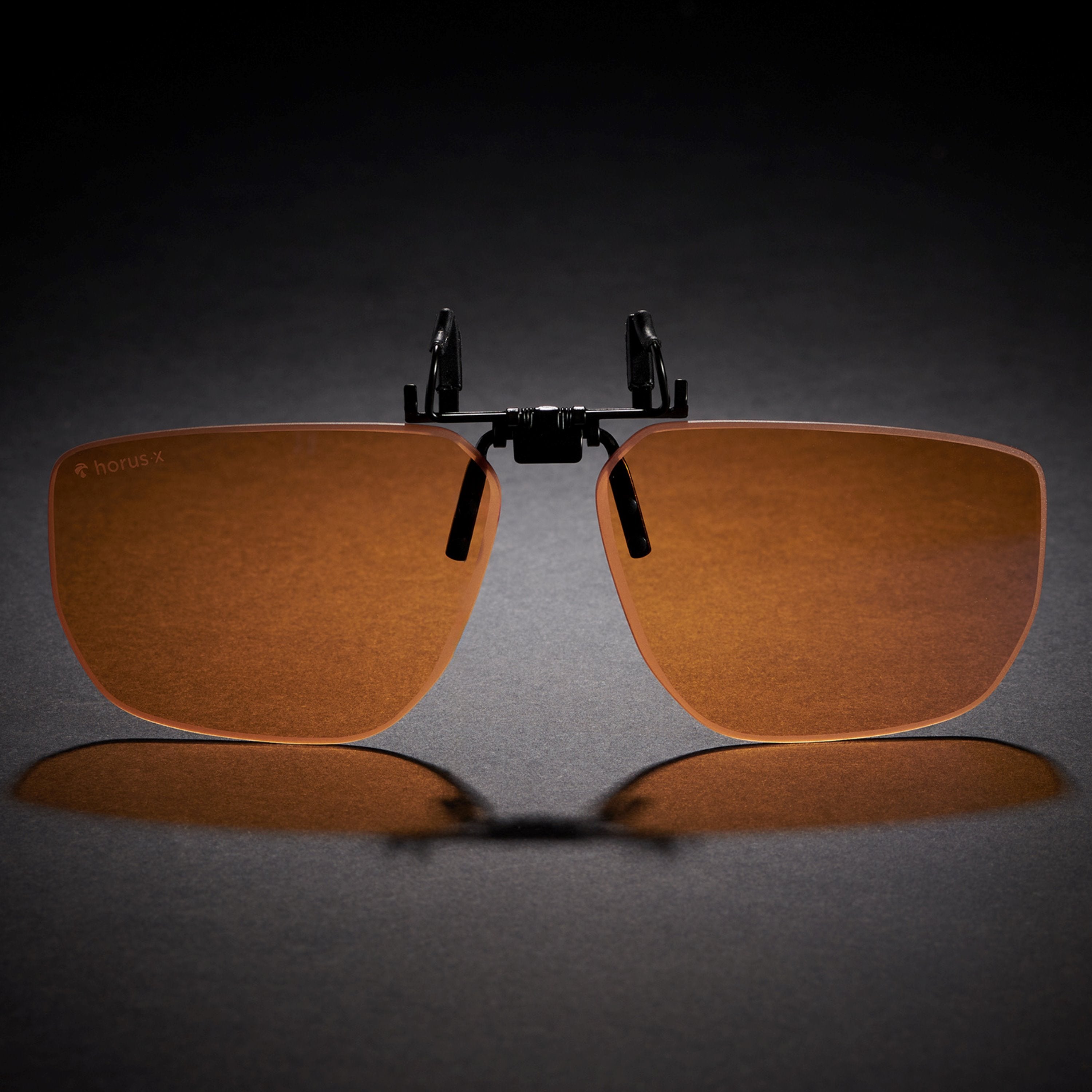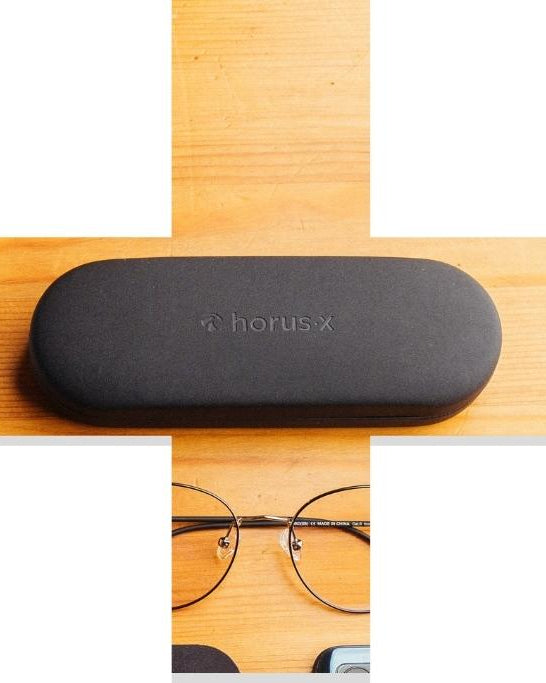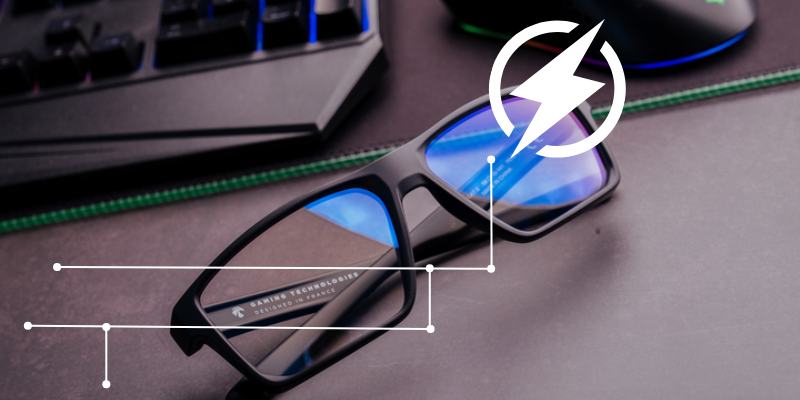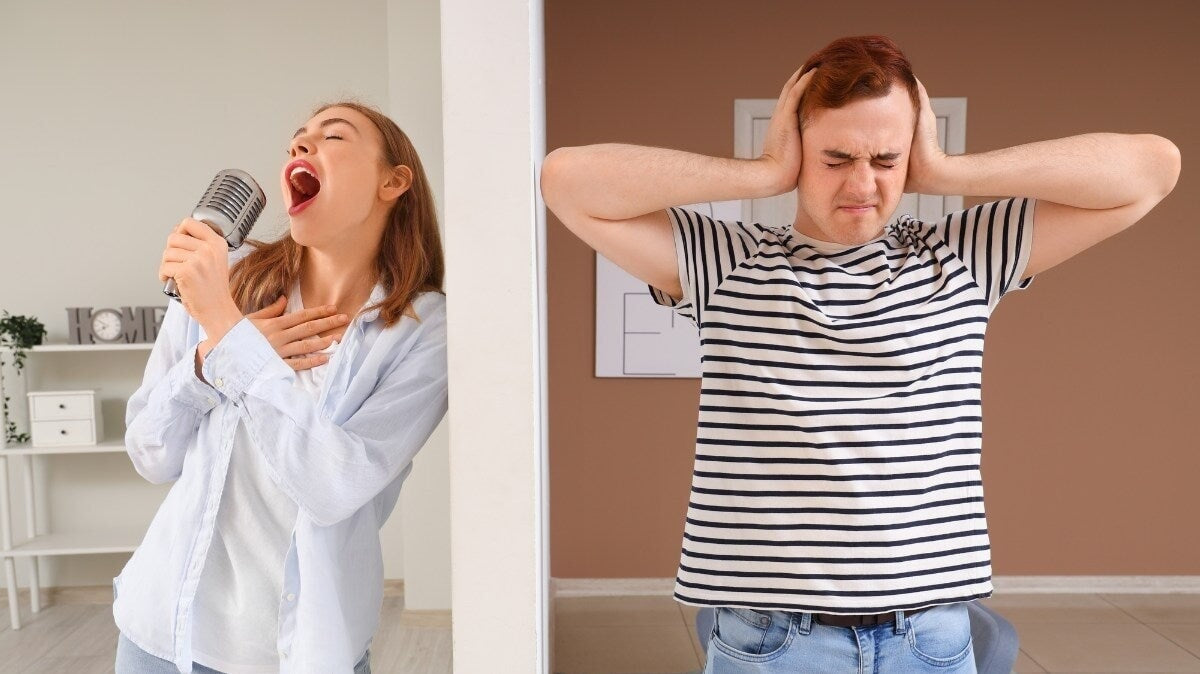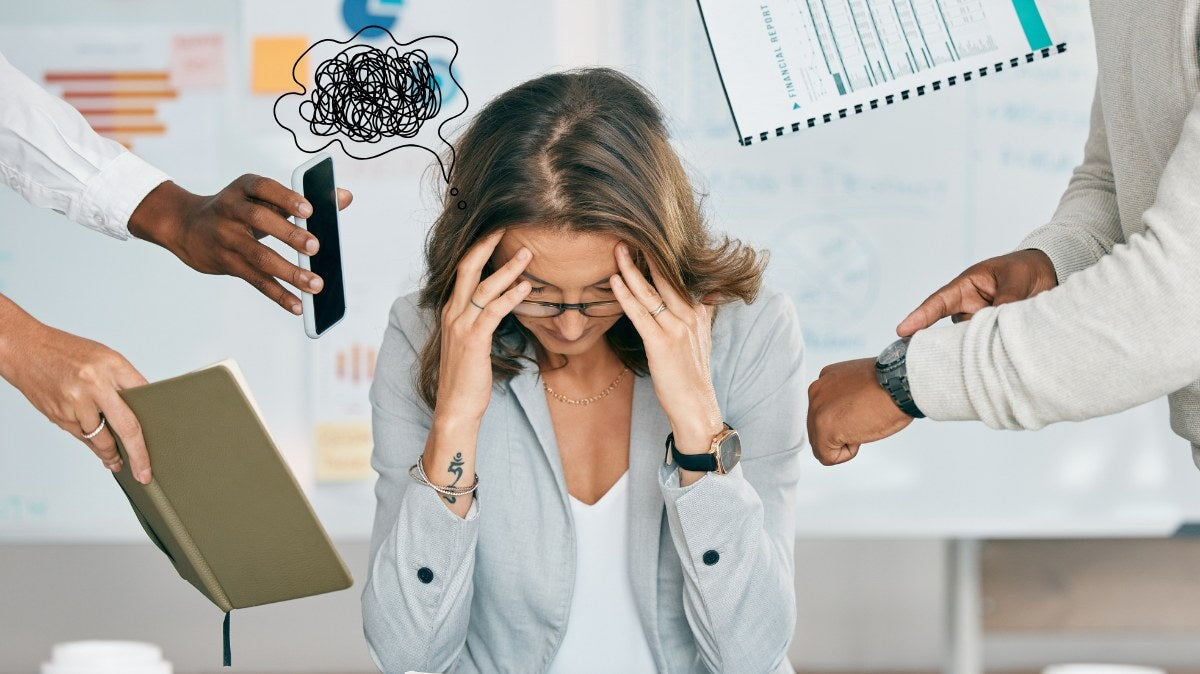At certain ages, or if you have any ocular issues, your eyes are more sensitive to blue light emitted from screens. It's important to learn about the dangers of blue light and the steps you can take to protect yourself against it, especially if you fall into these categories.
In other words, “I do not volunteer as tribute”.
In an age where we’re as glued to our screens as Daemon is to Rhaenyra, it’s hard to evaluate overuse, or regulate time spent in front of them. Especially if you’re a parent, gamer, remote worker, office worker or…. generally just live in the 2020s.
At different ages there’s a different amount of advised screen use per day. Try and follow these limits in our handy practical guide of screen time recommendations by age to ensure your young children aren’t suffering from overexposure.
Screens, blue light and their effects
What is blue light?
Blue light is a natural part of the light spectrum and is present in both artificial and natural light. It sits on the wavelengths between 380 and 500 nanometers; the closest you can get to UV rays without becoming them.
💡Unlike the blue light we’re exposed to by the sun, blue light from TV screens, digital devices and LED lighting is static. This means it doesn’t fluctuate during the day like natural light and has a different impact on your body.
Is blue light harmful?
Blue light is not harmful, in moderation. In fact, a certain degree of blue light is necessary and essential to keep us functioning like human beings. It tells us when to wake up in the mornings, and how to switch from day mode to night mode internally. At dawn, for example, blue light reduces the production of melatonin, the sleep hormone, for a natural and gradual awakening with the sun.
Or with a screech and dive back under the covers. Not all of us start our day like a yoga commercial.
⚡️Overexposure to blue light, however, is a different story. Especially before falling asleep as it can lower your melatonin levels and disrupt your natural sleeping pattern. Screens send the same messages day and nighttime, so they can really impact the quality and duration of your sleep.
The effects of blue light on eyesight and health
Apart from the impact blue light has on sleep, there’s also evidence that prolonged exposure to artificial blue light can lead to eye damage and short- and long-term health risks:
- Short term: computer vision syndrome (also known as digital eye fatigue), dry eyes, tingling, etc.
- Long-term: decrease in visual acuity, risk of degenerative eye diseases like AMD (age-related macular degeneration).
Experimental studies are even looking at the possible relationship between blue light and health, and if there’s a link between blue light and the appearance of diseases like heart disease, diabetes, cancer etc.
Even though nothing has been officially confirmed on this, it’s advisable to take precautions where you can.
Screen time recommendations by age. Before 3 years old: no screen time

The impact of too much screen on the development and health of babies:
It’s common sense really, for toddlers there should be no screens before the age of 2, or even 3 years old.
Stop trying to channel Boss Baby and take that computer away from your baby!
At this age the eye and lens are super fragile as its still developing. Overexposure to blue light and screens causes eye fatigue and headaches at any age. But add in being so young and the lack of time your system has had to develop and it makes sense screens just shouldn’t be allowed.
Plus studies have shown that using screens before 3, or even older, has proven harmful for cognitive development.
And it’s not just blue light that’s to blame. Overexposure to screens as a whole has been found to impact ability to understand social cues, concentration and reactivity, among other things. That’s why its crucial you set screen time guidelines from a young age.
According to the WHO, excessive and uncontrolled exposure to screens such as those on a digital device can lead to health problems such as:
- Obesity
- Sleep disorders (as there is a clear link between blue light and melatonin production)
- Cognitive developmental disorders
- Impacts on language and communication
- Increased risk of attention disorders and learning difficulties.
How to limit the effects of blue light before the age of 3
Honestly there’s no real reason young kids below 3 needs to look at a lot of screens anyway. They don’t have any important business meetings waiting.
If possible, try and keep them totally away from any smartphone, tablet, computer screen or television before age 2.
Also remember to reduce exposure to screens and LED lighting preferably at least 1 hour before bedtime for a serene sleep. And avoid feeding them after midnight… (they’re basically the same thing as Gremlins anyway).
Note: We are of course, kidding. If your very young child is hungry, please do feed them whenever is right for your routine!
From 3 to 6 years old: very small doses of screen time
For a slightly older child you can crack out the iPad in a restaurant when they just won’t be quiet.
However, it shouldn’t be a 0-60 affair. Children aged 3-6 should have strictly monitored and timed exposure to screens only. We recommend no more than 20 minutes per session, and not to exceed more than one hour per day for all screen time combined.
Ideally the longer you can go before you give in to the inevitable introduction to screens, the better. Although we’re not all saints, and sometimes they can be really annoying… so if you cave and give them that beloved screen time we won’t judge, promise. Just use your common sense on how much screen time to give them.
From 6-9 years old: 1-2 hours of daily screen time, maximum

As children are now entering elementary school it’s impossible to keep them away from screens entirely. Some of their educational content is probably even on one!
Plus, if your kids have discovered the wonders of Pokemon and Mario Kart then good luck not giving in to the inevitable begging. Try and limit their interest to one or two specific programs that you watch together, or have set sessions for gaming. That is until you rage quit upon realizing your 9-year-old is way better than you’ve ever been at racing games.
From 9 years old: always supervise screen time use
As your little gamer grows you can allow them to spend a maximum of 2 hours a day in front of screens.
But also remember, quality is as important as quantity. Try not to leave a child alone in front of a screen for hours at a time, regardless of age. For one, their brain is still developing, for two, you want to be aware of the media and internet they are being exposed to and keep an eye on it.
Plus, this is a great time to bond with your kid. Share your passions with them and show them how to make it down that infamous Clicker corridor in The Last of Us. (We’re kidding… please don’t show this game to 9-year-old children; at least wait a few years!)
You can also help limit exposure by purchasing a pair of children’s anti-blue light glasses, for that extra layer of added protection.
Teens and screens: preventing addiction

As we know, teenagers, like many of their parents, are often addicted to screens.
The answer isn’t to demonize video games, ban Game of Thrones or take away their cellphones; but to teach them healthy habits surrounding screens.
Without it, your healthy bouncy teenager could easily turn sloth-like, increasing their sedentary lifestyle, social isolation and lose their attentiveness. And it would all be thanks to screens and the dangerous blue light they omit.
Either that or your older children have had puberty hit them like a truck.
As always though, it’s everything in moderation. Overexposure through excessive screen time should definitely be avoided to help promote positive mental health, and protect the eye health of kids and teenagers.
The issue in this day and age is that teenagers prefer phone screens to actual human contact. That’s why it’s essential to establish basic rules regarding the use of screens early:
⚠️ No screens at the table
⚠️ No more than 2 to 4 hours of screen per day
⚠️ Set parental control settings where and when necessary
And yes, of course this is going to cause issues with the moody teens in your life. But then again, what doesn’t? Also, despite their issues I’m sure you still love them and want to protect them from harm, even if that harm comes in the form of artificial and natural blue light. You can even stick a pair of anti-blue glasses on them too. They’ll love that.
Precautions for adults
Surprise! Unlike Ellie in The Last of Us, you’re not immune. Blue light can affect you at any age. Sadly life isn’t a video game.
As we’ve covered, blue light can impact health and wellness, including your natural sleep cycle. That’s why even adults need to be careful about their exposure to screens.
But if reducing your screen consumption seems impossible, or unimaginable; there are things you can put in place to lower their effects. We understand some of us need to watch TV while playing games on your tablet and searching the internet on your cellphone.
Here are some small changes you can make to your screen time routine:
- 📱Use blue light filters
- 🌛 Turn on night mode on your devices
- 👓 Wear anti-blue light glasses with good filtration technology (like ours… we’ve got some of the highest filtration rates on the market).
And even if you’re the king or queen of doomscrolling social media, you should still try and reduce your exposure to blue light before bedtime. Experts have proven that it will help improve the quality of your sleep, and honestly, nothing new has happened since the last time you refreshed 0.5 seconds ago.
Seniors and screen time
After age 65 your eyes are more fragile and therefore sensitive to the effects of games. We don’t mean any offense to you grandparent gamers out there (ESPECIALLY not Skyrim grandma – we love you!), but it’s best you use both anti-blue light protection and corrective glasses, even if you have prescription lenses.

Eye fatigue is particularly prominent among this age group and will affect your overall comfort levels. Reducing your exposure to screens will therefore reduce symptoms such as headaches, blurred vision, or jumping eye... while preserving your sleep pattern.
The issue with blue screen from devices is that there’s no fluctuations in distance or intensity. That’s why it’s important to take plenty of breaks. Go for a neighborhood walk, chat to the local dogs at the park, slip on your Spidey suit and fight some local crime. Whatever floats your boat.
Recommended screen time by age | Final thoughts
The risk of overexposure to screens occurs at any age, but there are still certain categories of people (like the very young and older generations) that are more sensitive.
We therefore recommend the following amount of screen time based on age:
- As few screens as possible before 3 years (or even more!)
- 1 hour per day up to 6 years old
- 1 to 2 hours per day up to 12 years old, with parental supervision
- 2 to 4 hours a day for teenagers
We know you’re all adults and you can do what you want, but even after the teen years you should still reduce your exposure to reasonable limits. Don’t forget to try and mitigate blue light effects with filters, less screen time and wearing stylish anti-blue light glasses.

